For me, one of the biggest takeaways of the first round of fixtures in the World Cup in Russia was that Portugal looked like a side that would challenge far into the knockout rounds at the tournament. They performed well against an equally impressive Spanish side and worked hard in the defensive phase in the face of a team that dominated possession against them. More than that though, in Cristiano Ronaldo, they had a dominant finisher who was at times unplayable.
Indeed during that first match, the performance of the Portuguese side was heavily reminiscent of the side that played in and won the European Championship. They were defensively solid and worked hard in the defensive phase to cut access to passing lanes. They were also more direct in their attacking phase looking to access the final third through direct passes to Cristiano Ronaldo and Goncalo Guedes in transition.
Morocco, on the other hand, were perhaps unlucky to have lost their opening game 1-0 to Iran having impressed in large periods of the match with their ability to play in the attacking phase. The Moroccan side looked good going forwards but were unable to penetrate the Iranian defensive block, perhaps unsurprising given that they have a plethora of creative attacking midfielders but a real shortage of effective strikers.
In the end, Portugal won the match 1-0 courtesy of an early Cristiano Ronaldo goal and perhaps that goal went some way to ending the match as a spectacle. Once more Morocco impressed hugely in possession but the Portuguese defensive block held firm.
Team News
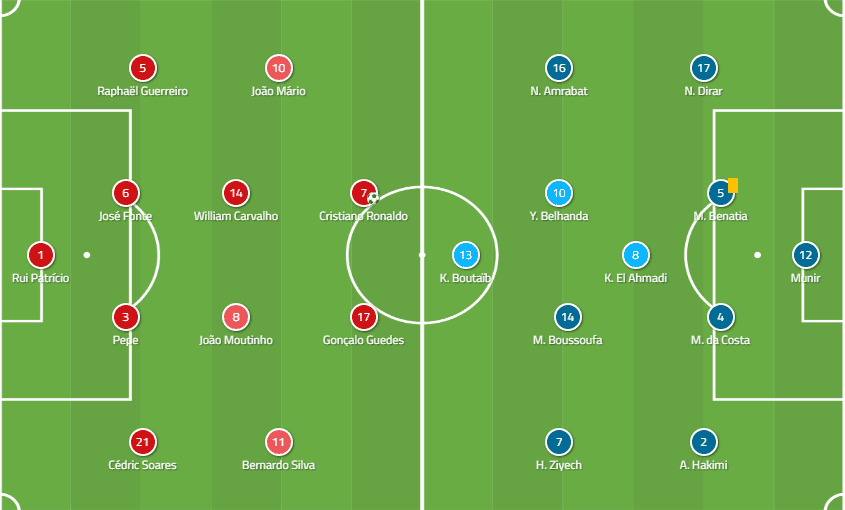
The structure from Portugal was a 4-4-2 with only one change from the first match, Joao Mario replaced Bruno Fernandes on the left of midfield with the intent perhaps for Portugal to play a more possession orientated attacking style. In the end, however, after scoring an early goal the Portuguese adopted a very much defend first style in order to negate the threat of their opponents.
Morocco once again adopted their 4-1-4-1 system with the key to their hopes lying in the four players behind the loan striker. If Morocco were to have any hope of getting a result in this match then they would rely on the talents of Hakim Ziyech, Mbark Boussoufa, Younes Belhanda and Nordin Amrabat.
Morocco create overloads in attack
After the early goal for Portugal, a fourth-minute goal for Cristiano Ronaldo, the Portuguese sat back a little to try to contain the waves of Moroccan attacks before looking to spring forward into a counter attack. This in turn ceded ground to Morocco and they were able to play up in the final third of the field creating overloads in wide areas and threatening to penetrate the Portuguese penalty area.
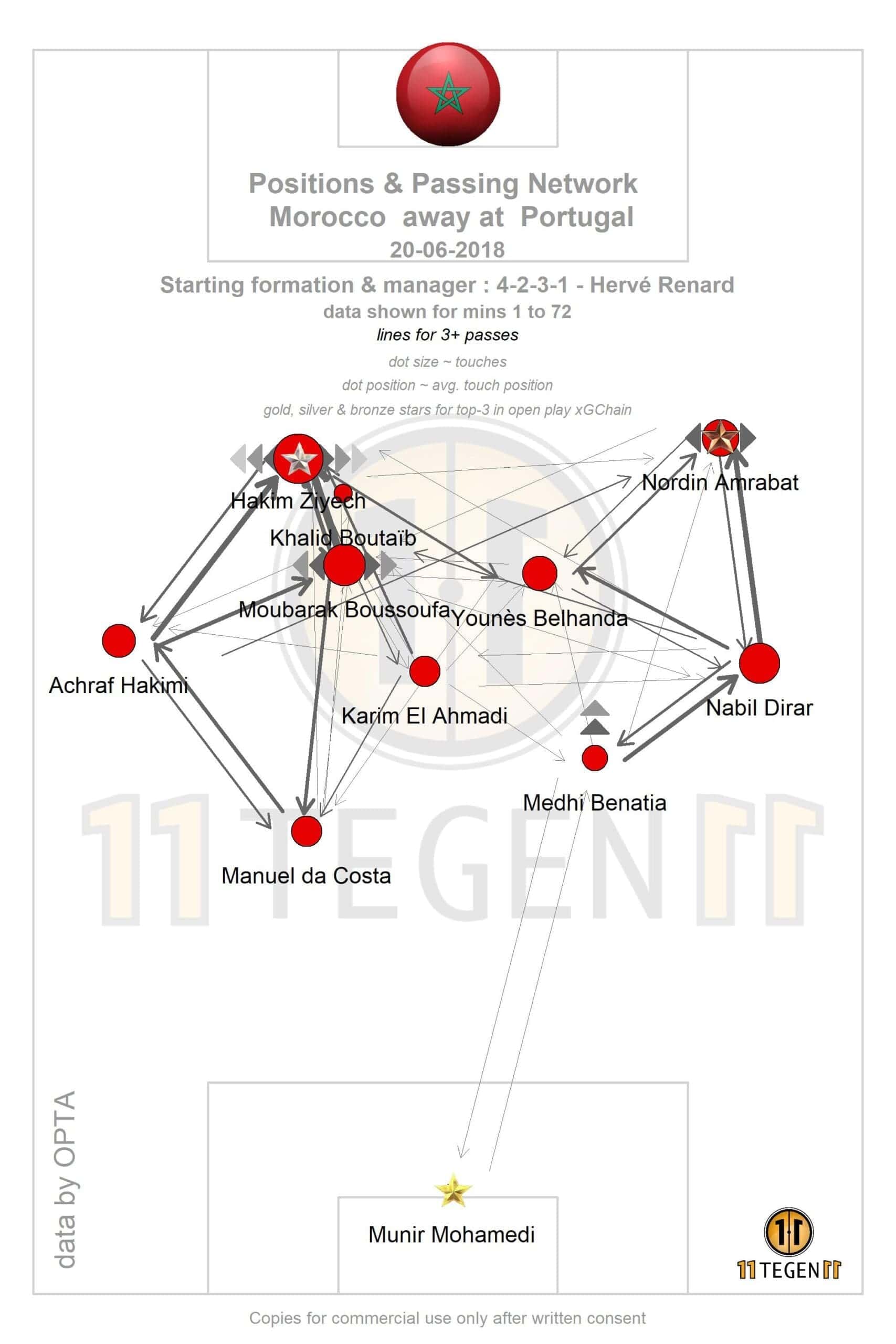
This pass map, created by the excellent @11tegen11 using Opta data, shows the advanced role that Hakim Ziyech occupied in the build up as he dictated the flow of the game for Morocco. The North African side were also excellent in creating triangles and passing options to enable the ball to flow from the back.
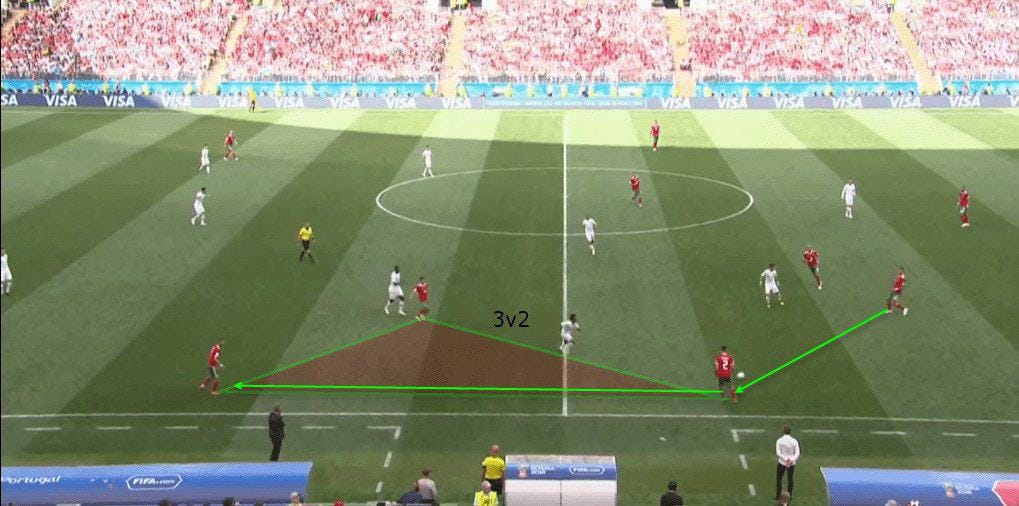
In this example Morocco are looking to attack down the left hand side, where Hakim Ziyech and left back Achraf Hakimi combined well. As the first pass is played out Morocco immediately have a triangle giving the man in possession three passing options, back to the original player, down the line, or inside into the half space.
With the positioning of the Portuguese players Morocco also have created a 3v2 overload that enables them to move the ball efficiently up the field.
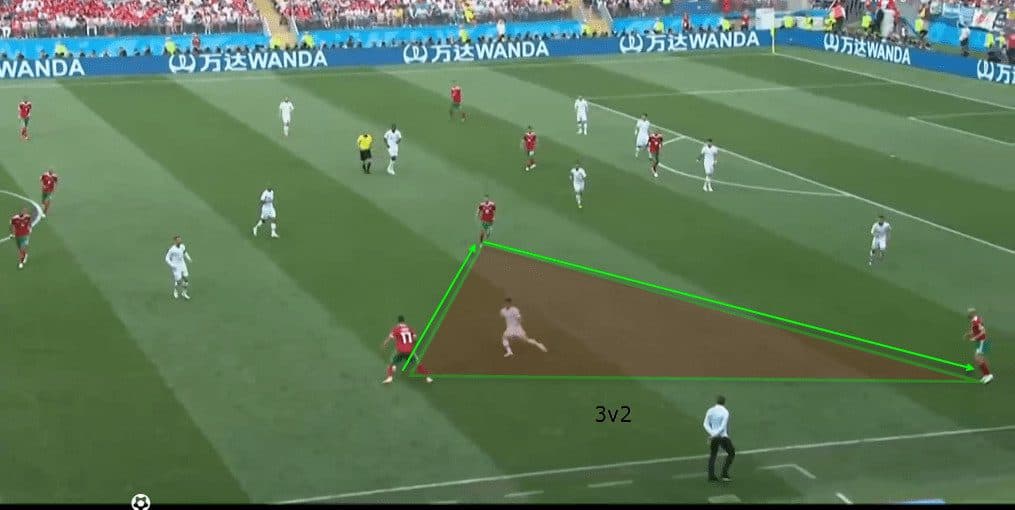
Again here Morocco have created an opportunity to overload the Portuguese defensive structure in the wide area. As the Portuguese left back comes out to cover the man in the wide area Morocco have a 3v2 advantage once again.
This advantage allows the man in possession to make the pass into the central area or to turn the ball back out and down the line. He passes inside with the second pass then going out to the advanced player in the wide area. This, in turn, allows Morocco to advance the play up into the final third.
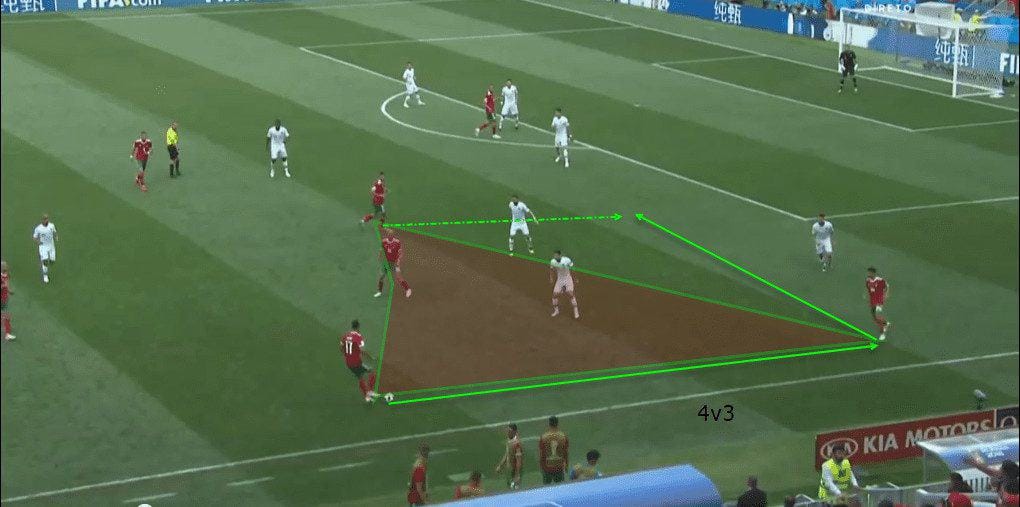
Again here Morocco are building up through the wide areas. This time with positioning and additional movement they create an effective 4v3 overload. With the movement of the last player to join the overload they also attack the weak point in the Portuguese defensive structure with the gap between the left back and the left sided centre back having become stretched.
It was unfortunate for the Moroccans that despite this interesting and effective attacking structure they were unable to find a way to create and finish a chance to bring the match level.
Moroccan Press
When Portugal were able to regain the ball and look to transition into their attacking phase they struggled to play through their midfield with Morocco pressing high in an effort to disrupt the Portuguese build up.
With Portugal going a goal up early in the match it allowed them to sit in a slightly deeper block to prevent the Moroccans from getting in behind, This, in turn, created larger spaces in the Portuguese attacking structure with the defence, midfield and attack being essentially isolated into their individual components.
This is why the Portuguese chose to utilise direct passes from back to front into Cristiano Ronaldo and Goncalo Guedes in an attempt to relieve the pressure on their own goal.
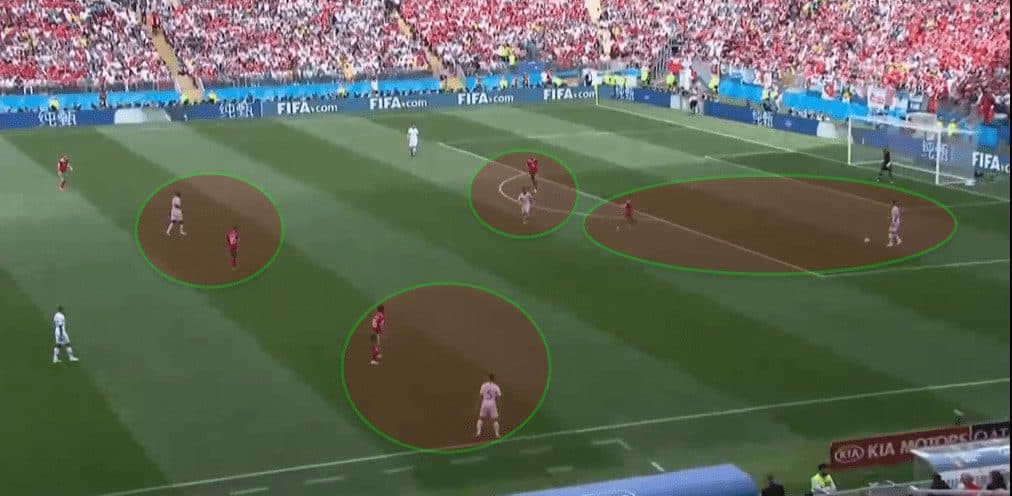
Here you can see the Portuguese looking to build up from their defensive third with a central defender in possession deep. Morocco have taken up a man orientated pressing system with no clear or easy passing options available to the man in possession.
With one Moroccan player looking to put pressure on the man in possession to prevent comfortable progression of the ball, we saw Portugal look to play over the top of the press in order to try to access the space in behind. Whilst this is an understandable strategy to use it also becomes difficult to control the transition when you play so direct.
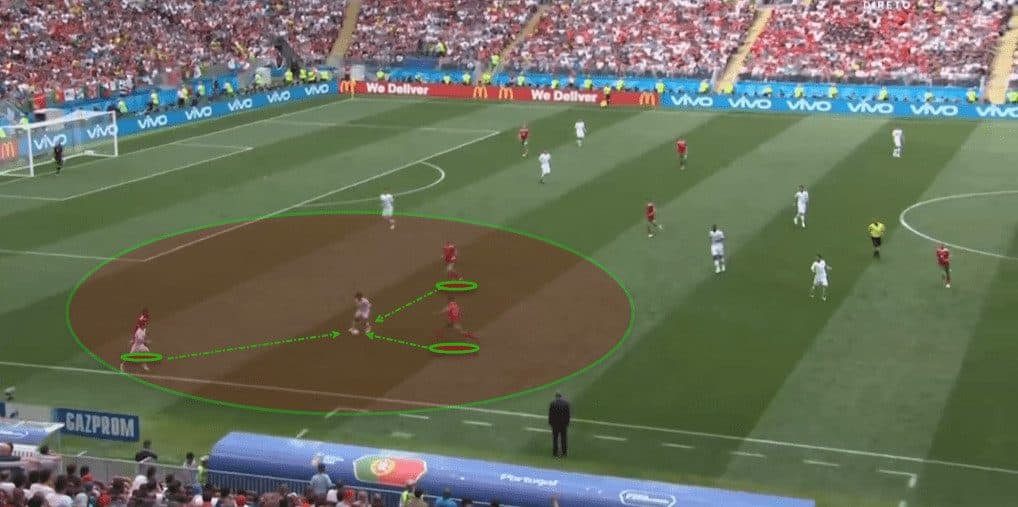
Here we saw a more isolated transition with Portugal winning the ball back in their right back area and looking to move the ball out to transition to the attack. As soon as the first pass was made out of the ball recovery two Moroccan players press out to the receiving player who is facing his own goal.
In pressing and engaging the ball in this way Morocco strangled the Portuguese attack and forced them to play long into space.
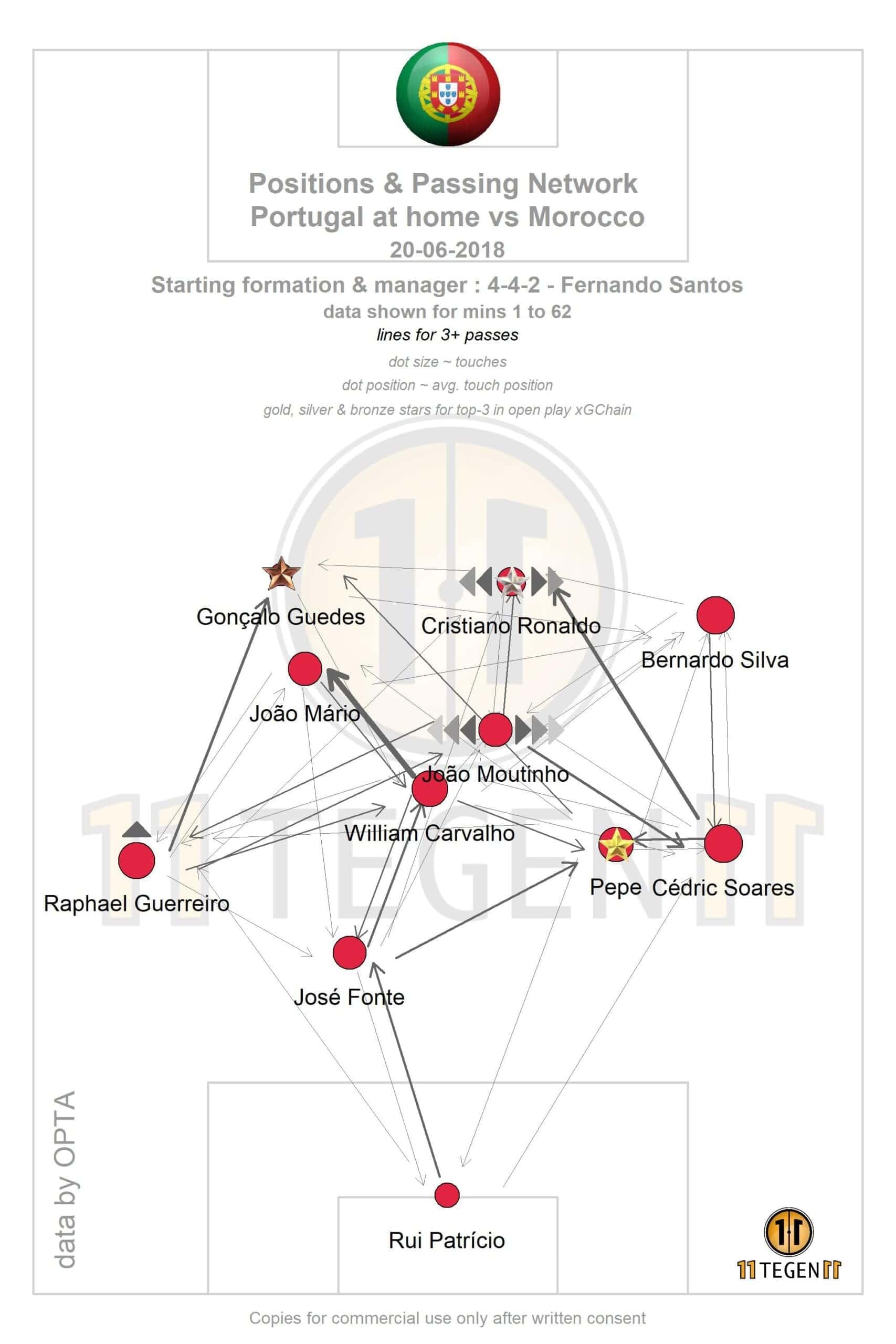
This is further supported by the Portuguese pass map, once again taken from @11tegen11 using Opta data. You can see that there was a lack of connections from William Carvalho and Joao Moutinho in the centre of midfield. They essentially became purely transitional players who would look to support the attack or the defence but spending very little time in possession of the ball.
Conclusion
This Moroccan side should be aggrieved that they have left the tournament on the back of two somewhat unfortunate 1-0 defeats. They were enterprising and creative in the attacking phase throughout but suffered hugely from the lack of a quality striker.
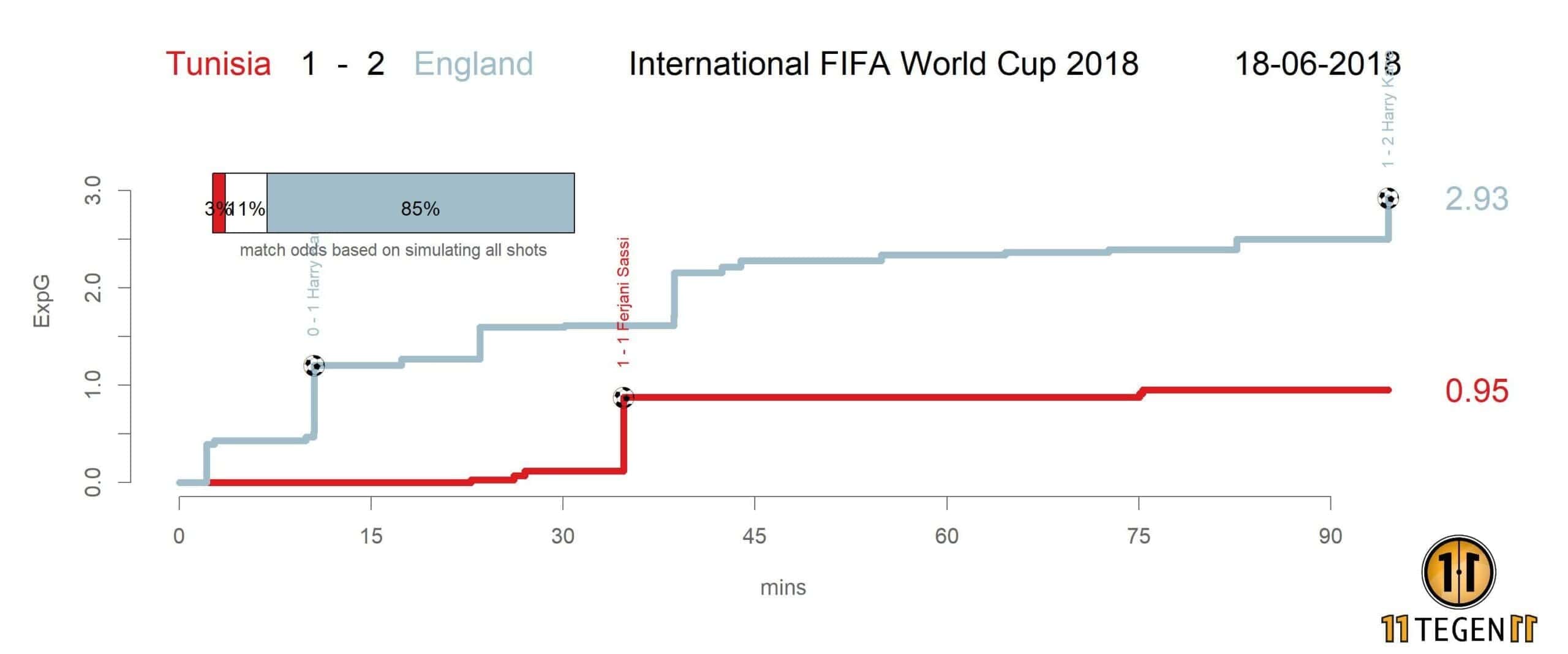
This is born out from the xG map with the Portuguese edging it by 1.13 to 0.92. This shows that for all of the impressive attacking play from Morocco they failed to create the chances that could have seen then draw level.
Essentially this was peak Portugal over the last two years.
Why not check out the analysis from these sides first group games with Portugal Vs Spain and Morocco Vs Iran

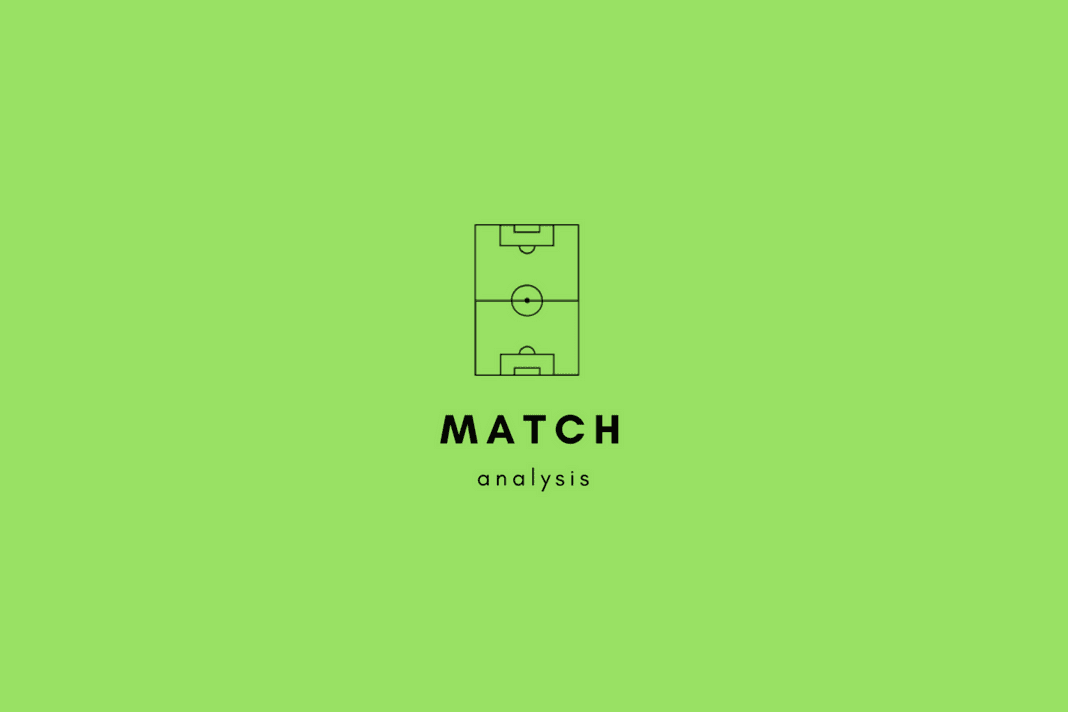




Comments